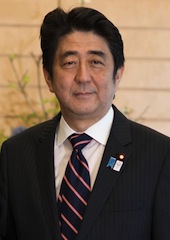A Real Stimulus For Japan
In designing stimulus programs, how about addressing real and neglected needs of Japan’s population?
August 5, 2013

Many Japanese appear to be excited about the spending spree on which the government seems ready to embark, now that the upper house elections have given a clear mandate to Mr. Abe’s party.
I clearly remember similar actions by previous governments during the last two decades. They did not produce the desired results. To the contrary, those stimulus packages just left the Japanese people deeper in debt, a debt which now stands at 1,000 trillion yen.
There is a real risk that when Mr. Abe fires the much talked about third and final of his “Three Arrows,” the economy might be hurt rather than being strengthened.
Even with a stimulus package of over 10 trillion yen loaded in Mr. Abe’s second arrow, it is doubtful it will hit its target of generating 2% growth over the next 10 years.
Under previous governments, such stimulus programs had been used largely to tear up roads that were in perfect condition and re-surface them again. All this wasteful activity stimulated was widespread traffic jams and inconvenience for all.
Moreover, these programs did not benefit anybody except the construction industry, which traditionally has strong links to the ruling LDP politicians.
If the government must resort to Keynesian economics, I suggest a different approach: It will not only be productive, but also address problems associated with the onset of a “graying society.”
In addition, it will raise the standards of Japanese housing to the level prevalent in the United States and OECD countries.
My first suggestion is that the government should embark on building new and better hospitals, old peoples’ homes and care centers.
One in four Japanese is over 65 years old and the number of senior citizens is projected to increase to about 38% of the population by 2050.
Japan is woefully short of infrastructure needed by the graying society in their twilight years. The building of this infrastructure would generate significant business and new employment opportunities and would pay for itself over a period of time.
My second suggestion is that, instead of tearing up and re-surfacing perfectly good roads, the government should set a target of building one million new apartments over a 10-year period. In other words, 100,000 new apartments would be built every year.
The purpose of this is to provide ordinary Japanese an opportunity to experience a higher standard of living.
Many Japanese still live in what they themselves call “rabbit hutches.” Japan needs to leave the past behind and finally adapt to the modern, affluent lifestyle of citizens of a modern, post-industrial society.
These apartments should be built all over Japan, especially in all major cities, in sizes of 50, 100 and 150 square meters for singles, couples and families.
They should be made available at the price of one thousand yen per square meter per month, in Class A cities like Tokyo and Osaka and at lesser cost in smaller cities.
Thus, a family could enjoy living in a spacious apartment of 150 square meters in Tokyo/Osaka for ¥150,000 per month (or about $505).
When people move to live in these bigger apartments, they will also buy new, or bigger, furniture, curtains, refrigerators and wide screen television sets, thus raising consumption and giving a boost to the economy.
This investment in public works will also pay itself back, through rental income, over a period of 20-30 years. This will have less long-term impact on the debt than other stimulative measures.
The problem with Japan is that its economy is based on exports, and if its exports are at a standstill, so is its economy. The last two decades have witnessed little growth in exports and this is reflected in the stagnation of the Japanese economy.
Converting Japan’s economy from one based on exports to one geared towards creating and fulfilling domestic demand should be one of the main targets of Mr. Abe’s third arrow aimed at structural reform.
It is no secret that Japan needs to increase domestic consumption. But this is becoming increasingly difficult, as Japanese consumers are wary of spending in view of the uncertain economic landscape.
Moreover, the number of people with reasonably high disposable income has been declining, along with the sharp increase in the number of temporary or non-regular workers.
According to government figures, there is now one temporary worker for every two who are employed full-time.
These workers earn meager salaries, are not entitled to medical or other benefits, have no job security and mostly live hand-to-mouth.
They simply do not have the wherewithal to increase their level of consumption. Many of these temp workers don’t even marry, or marry late, in view of their marginalized existence.
If somebody has been continuously employed in a certain position as a temp or part-time worker for at least five years, it can be argued that the employer has a continuing economic need for that job and that person.
It can also be argued that this person is being exploited by his or her organization. Merely by classifying that job as temporary or part-time, the employer can get away without paying him or her adequate wages, social security and other standard benefits.
This shameful situation persists in most sectors of the economy. In the field of education, most universities continue to hire teaching faculty on a part-time basis even though many of these adjunct teachers have been teaching at their institutions for more than 10 years.
My point here is that we need to have an approach that is people-centered. Governments are elected by the people and they exist to serve the people.
It is high time the Japanese government begins to safeguard the interests of people (who elected it) rather than furthering the interests of big business only.
Takeaways
Japan should embark on building new and better hospitals, old peoples' homes and care centers.
Japan's government should set a target of building one million new apartments over a 10-year period.
The number of Japanese with reasonably high disposable income has been declining.
Many Japanese temp workers don't even marry, or marry late, in view of their marginalized existence.
Japan needs to have an approach that is people-centered. Governments are elected by the people.
Read previous

Aid Workers Under Attack
August 4, 2013
